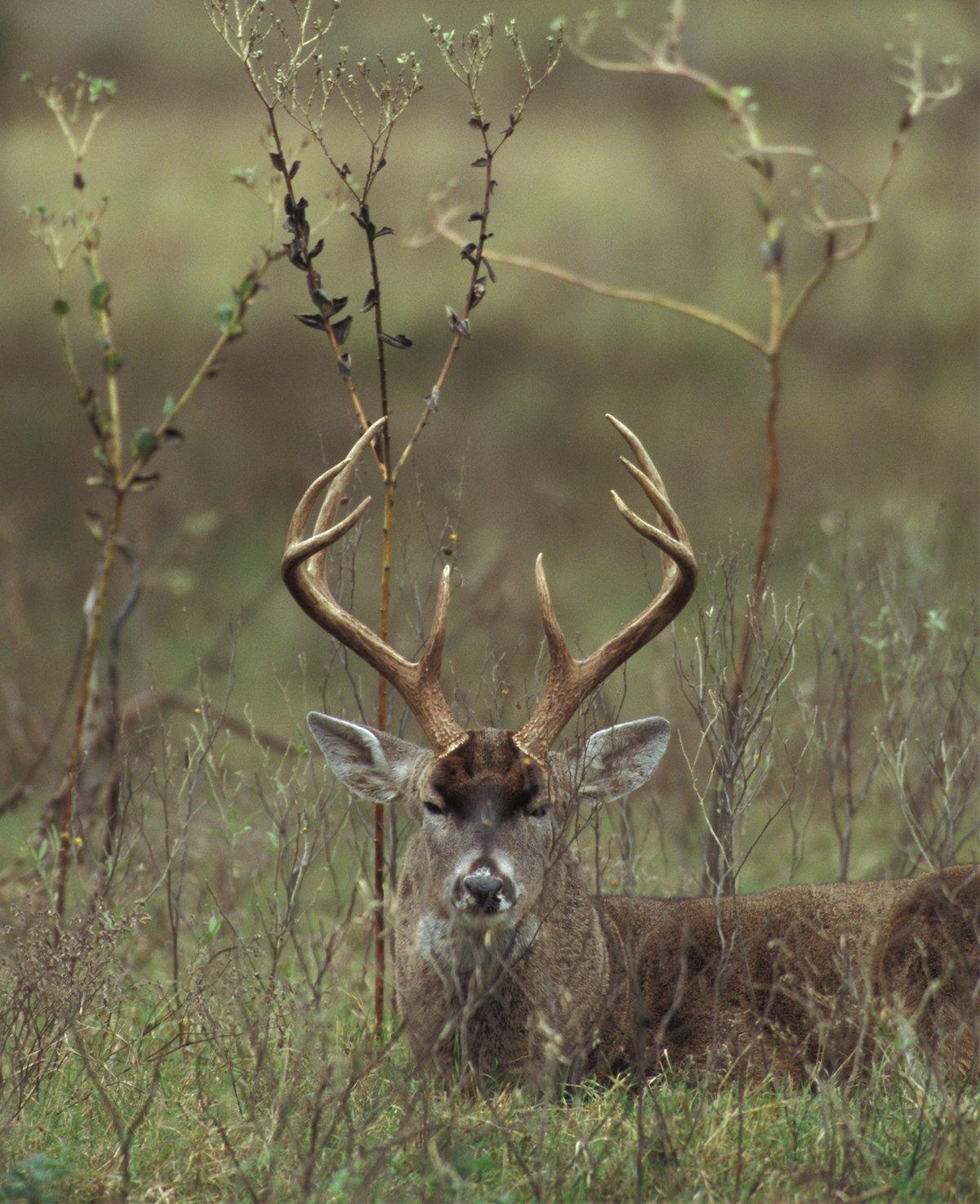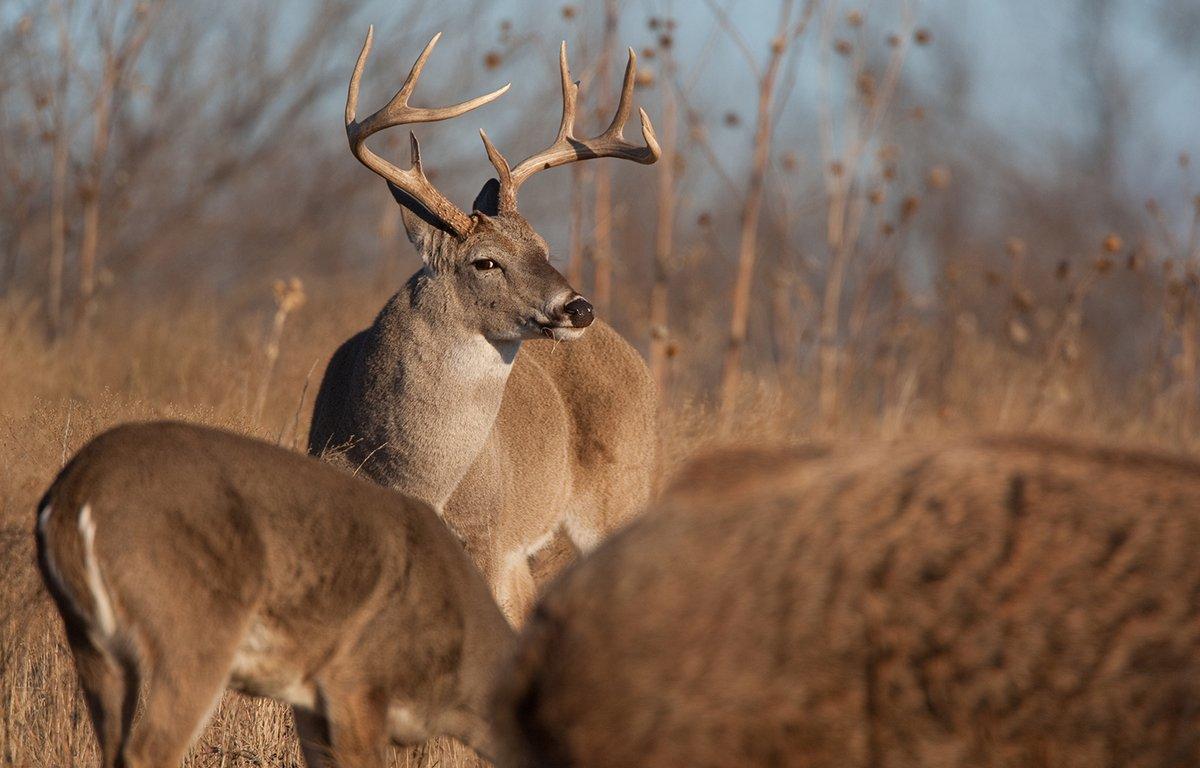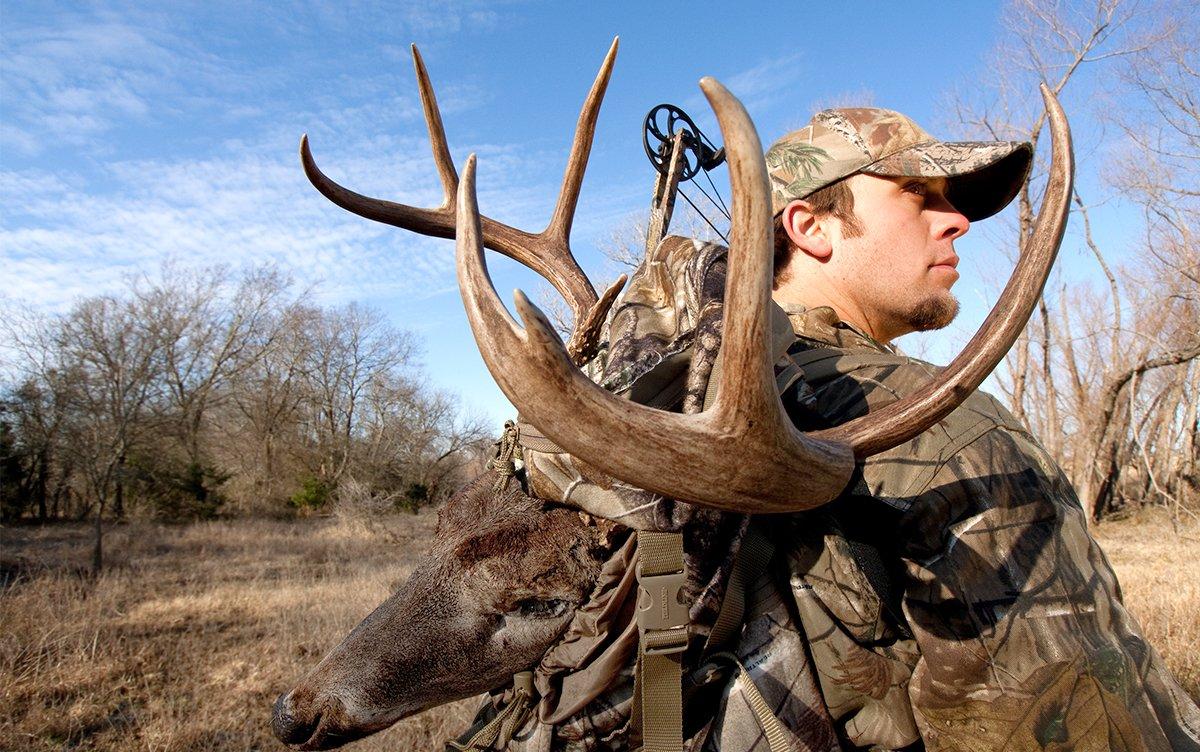A Well-Balanced Buck Age Structure Is What Nature Intended
The white-tailed deer is the most revered animal in North America. How do I know that? Because more licensed hunters flock to the field to hunt the whitetail each season than any other species.
The whitetail is loved, no doubt.
So why is it that people oftentimes confuse trophy management with QDM? Why do they refuse to do what's best for the herd? Or at the very least, why do they ignore the fact that managing for bigger bucks doesn't just lend to trophy hunting?
Kip Adams with the Quality Deer Management Association (QDMA) shares some insight on this matter.
Trophy management differs from QDM in it typically results in lower deer densities and advanced buck age structures, Adams said. With QDM, the goal is to have balanced age structures; while with trophy deer management, the goal is to move a lot of bucks into the fully mature age classes.
Managing deer herds using the QDM philosophy helps put the right number of deer on the landscape, and this ensures all deer receive abundant nutrition without degrading the habitat, Adams continued. QDM also ensures there is a balanced age structure and adult sex ratio. These are both very good for deer herds.

- It improves the health and well-being of the entire herd.
- It increases or decreases the population density based on what the property needs.
- Each animal has the amount of food it requires to stay nutritionally sound.
- You will see older (bigger) bucks and deer are more visible, which means more exciting trips afield.
- It helps ensure hunting opportunities for future generations.
The science is on QDM's side, too. And managing deer so that you have a balanced buck age structure improves the overall health of the entire population. Having the right age structure improves the herd dynamics in numerous ways. Many people don't realize that. And many who do, refuse to accept it.
Yes, deer evolved with balanced age structures, and unhunted populations today have very balanced age structures, so as managers, we should try to mimic what nature produces, Adams said. Deer are extremely social animals with regard to exchanging information at rubs and scrapes, and their social order works best with balanced age structures.
Furthermore, the management practices that go into managing for older deer stem from increasing the quality of habitat, food sources, bedding cover and fine-tuning harvest decisions — all of which benefit younger bucks, does of all ages and fawns.
The rut is a major factor. A balanced age structure translates to a shorter, more synchronized rut. More action is witnessed as bucks have to work harder to find does. But it's been proven they're worked far less overall during a shorter rut than when buck-to-doe ratios aren't as close. The breeding is then spread out over months instead of weeks and that scenario takes much more of a toll on a buck's body and health.
It's also better for fawns as well. A more synchronized rut means a tighter fawning window the following spring. The fawn recruitment rate and success of the fawn drop relies on many fawns hitting the ground simultaneously. This makes it much more difficult for predators to kill as many of them than when fawns are born over a longer span of time.
It really isn't hard to accomplish this QDM goal once a hunter or group of hunters have decided to work together for the greater good.
Protecting the majority of young bucks will allow numerous bucks to get into the middle age classes (3½ to 4½ years old) and provides outstanding hunting opportunities, Adams said. Some of these will hit the fully mature age classes and provide even better hunting. My top tips to have older bucks are to provide great cover, be aware of your hunting pressure, and work with your neighbors.
Some steps to follow once you take on QDM and decide to improve the antlered age structure:
- Set management goals
- Increase the quality of food sources
- Provide additional water sources (if needed)
- Create more (and better) bedding cover
- Make good harvest decisions
- Plan with neighboring hunters
- Monitor the herd
- Keep detailed records
Interestingly enough, we've come a long way when it comes to letting bucks reach older age classes. According to the 2018 Whitetail Report from the QDMA, the percentage of yearling bucks in the U.S. buck harvest has declined from 62 percent in 1989 to 35 percent in 2016.
There are some states that seem to do this better than others. The top five states with the lowest percentage of yearling bucks in the buck harvest include Arkansas (5 percent), Mississippi (10 percent), Louisiana (13 percent), Oklahoma (17 percent) and Florida (19 percent). The states with the highest percentage of yearling bucks in buck harvest include Wisconsin (65 percent), New Hampshire (51 percent), New York (49 percent), Virginia (49 percent), Maryland (47 percent) and Michigan (47 percent).
On the flip side, the top five states with the highest percentage of 3½-plus-year-old bucks in the buck harvest includes Mississippi (78 percent), Arkansas (77 percent), Louisiana (72 percent), Oklahoma (59 percent) and Texas (59 percent). The state with the lowest percentage of 3½-plus-year-old bucks in the buck harvest were Tennessee (16 percent), Wisconsin (16 percent), New York (19 percent), Vermont (20 percent) and New Hampshire (24 percent).
The future looks good. In fact, with the exception of Chronic Wasting Disease, it looks better than it ever has. But how should we approach the public stigma that oftentimes follows managing for big deer? How can we use science to show that it actually benefits the species? That's the million-dollar question. But we'll leave you with this thought.
Trophy deer management is not supported by the majority of Americans, but QDM is, Adams said. Just as big trees can be a sign of successful forest management and big fish can be a sign of successful fish management, big healthy deer are a sign of successful deer management.
That makes sense enough to me.
Don't Miss: 7 Ways to Practice Quality Deer Management
Are you a deer hunter wanting to learn how to accomplish your goals? Check out our stories, videos and hard-hitting how-to's on deer hunting.








